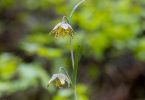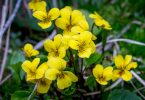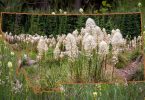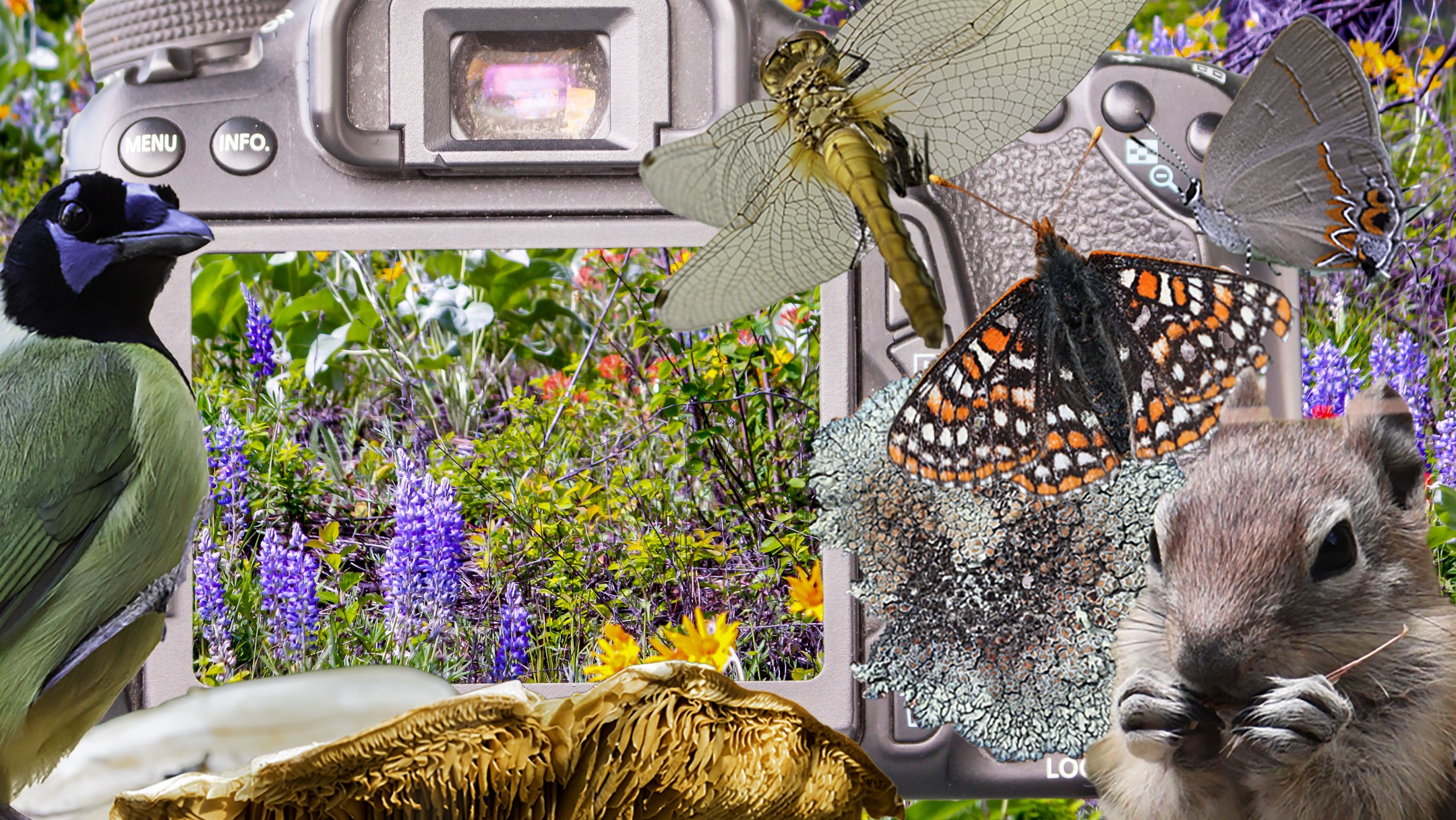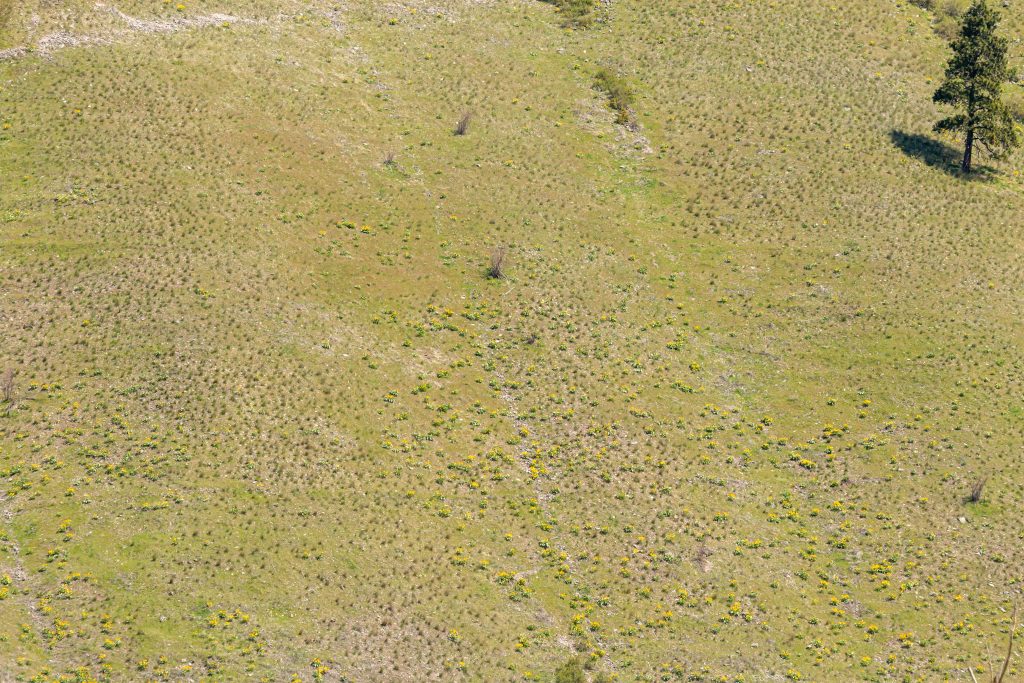
Yes, it is a loaded question
Arrowleaf Balsamroot ( Balsamorhiza sagittata) is a large wildflower with many flowers, approaching 36 inches in height. It is obvious in bloom on mountain foothills even at a distance (photo above – south facing slope of Mount Jumbo at Missoula, Montana). For sure you could count or estimate the yellow spots on the photo above and be fairly accurate, right?
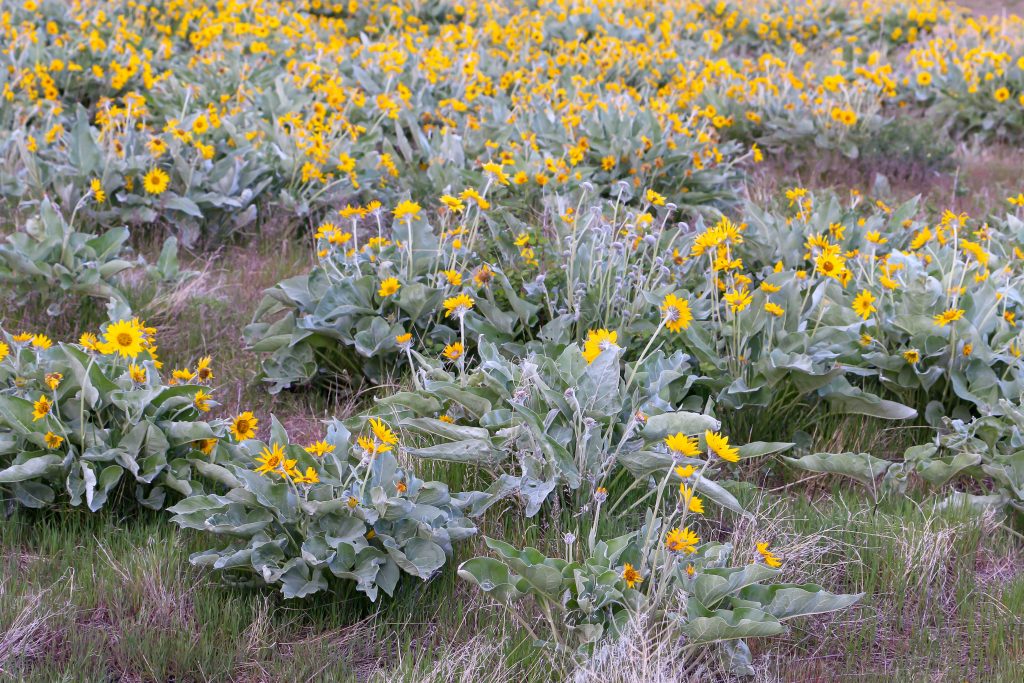
Closer look
If you were standing right in the middle of them (photo above), wouldn’t that help? It might not if it was a windy day.
Imagine bending over the plants, the photo below is what the flower head looks like close up. This would be the mental image for counting. More importantly are the red star-shape and the white T-shape on the photo. These are structures that are going alter your preliminary count upward.
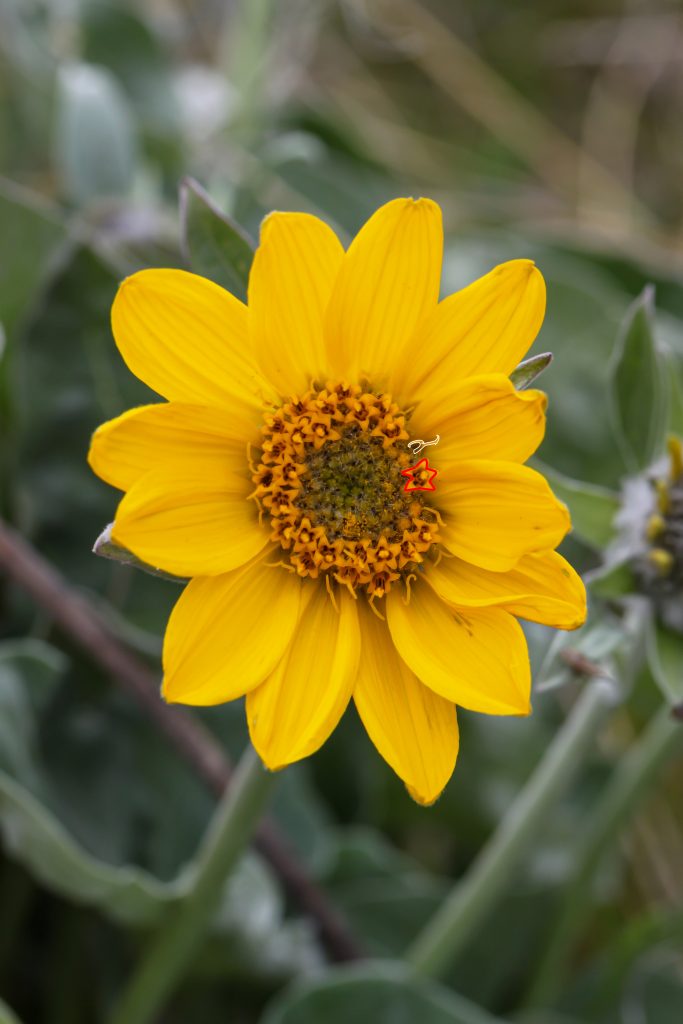
Further clues
This plant is a member of the Aster family (Asteraceaea) or Composite family. Plant species (~33,000) in the Composite family have flower heads that look like one large flower.
Disk flowers
They are actually composed of many ‘disk’ and/or ‘ray’ flowers. That’s where the name composite comes in. In botanical terms the flower head structure is described as a ‘pseudanthium’ that’s Greek for ‘false flower’ or alternative term is ‘capitulum’. Look closely again at the macro photo above. Note the red star-shape on the photo, this outlines an individual disk flower. There appears to be 24 open and about 45 unopened disk flowers, all packed tightly together in the middle.
Ray flowers
The large yellow ‘petals’ are not petals, but ligules. They are the most obvious part of the ray or ‘ligulate’ flower. The white deformed T-shape outlines the ‘style’ and ‘stigmas’ of the ray flower which are attached to the ligule below the disk flowers. Crudely, the entire ray flower is strap-like. Access figure 8.3.5 of Biology Libre Texts for an exploded graphic of a ligulate flower. You will note that there are twelve on this particular flower head.
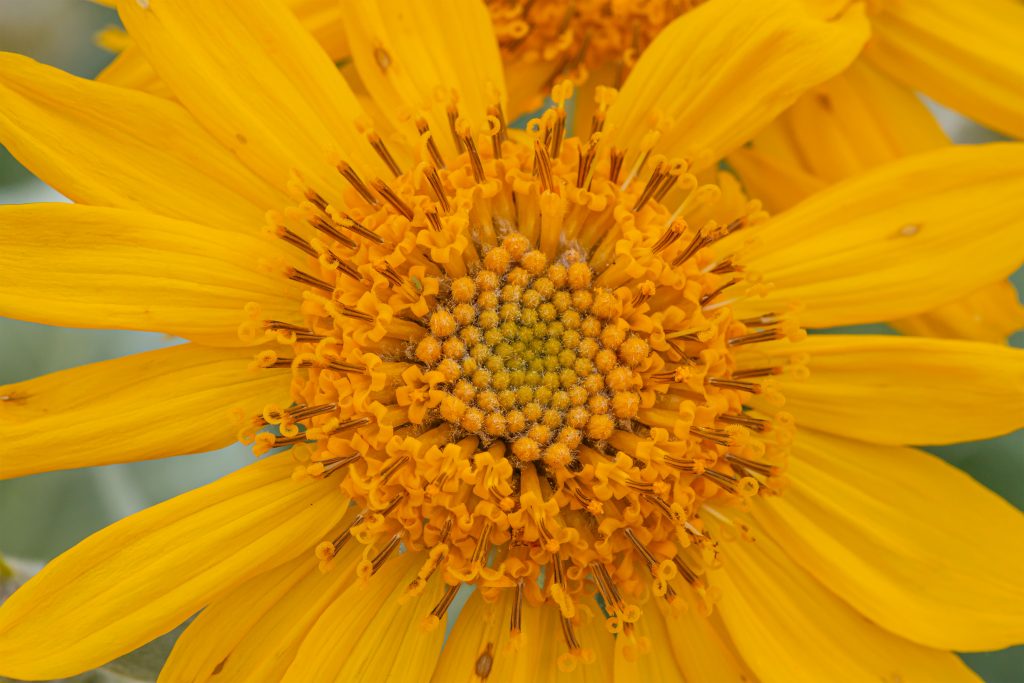
Answer
So the math from the single pseudanthium (flower head) example adds up to 81 (12 ray + 67 disk) flowers. Some literature states there can be as many as 25 ray flowers and ‘numerous’ disk flowers per flower head. But, let’s stick with the exampled photo count of 81 as an average. The plant in the video above has 8 flower heads which totals to 648 flowers. I estimate 450 balsamroot plants (putting my large-flock-of-birds counting skills to use) on the mountain side. That’s an estimated 291,600 flowers!
Further reading
Ohio Plants.org has a nice overview of the Aster family. Lady Bird Johnson Wildflower Center has additional information on Arrowleaf Balsamroot.


